Finders-in-the-field: Sulphur-bellied Warbler, Christiansø, Denmark, a WP first
Christiansø in the Baltic Sea is one of the best Danish sites for rare birds. Egyptian nightjar, Rufous-tailed Robin, Swainson’s Thrush, Siberian Rubythroat and Siberian Accentor have all been recorded here within the last 35 years. But on the 30th may 2016 an even rarer bird appeared on the island!
I arrived on Christiansø by boat at 1100. It was quite a hot day with steamy mist around the island. Already after a few hours I managed to locate a singing Blyth’s Reed Warbler at the southend close to “Slottet”. It was quite a good find and I immediately called Peter Lyngs who was also on the island, to tell him about the bird. Shortly thereafter, I noticed a small bird calling with a peculiar “djep” – somewhat similar to a single call of a distant Bearded Tit or the soft call of a Radde’s Warbler. I turned to find a small Phylloscopus warbler perched in a small bush. The yellow supercillium and pale legs led me to believe it was just a Willow Warbler and I quickly turned my attention back on the singing Blyth’s. Peter Lyngs soon appeared but again the Phyllosc called. This time it flew past us up in a nearby tree.
“That’s a weird call for a Willow Warbler” I said. “A Willow Warbler surely can’t call like that!”, Peter replied. We now noticed that the yellow supercillium seemed profoundly longer than on Willow Warbler. The bird kept calling again and left us utterly confused. Both of us are familiar with pretty much the Western Palearctic species of Phylloscopus – and this bird did not match any of them!
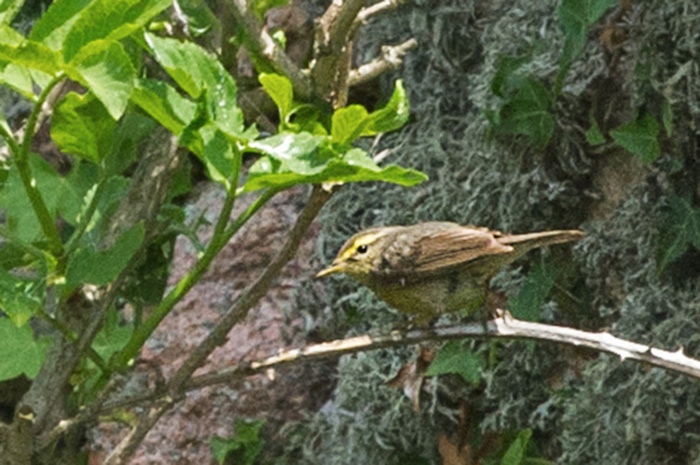
After a couple of minutes, the bird started singed. The song sounded a bit like that of Lesser Whitethroat or perhaps Linnet, which only added to our confusion.
Lars Christansen, Anders Myrtue and Hand Ole Mathiessen joined us, but all found themselves equally ignorant about the birds ID.
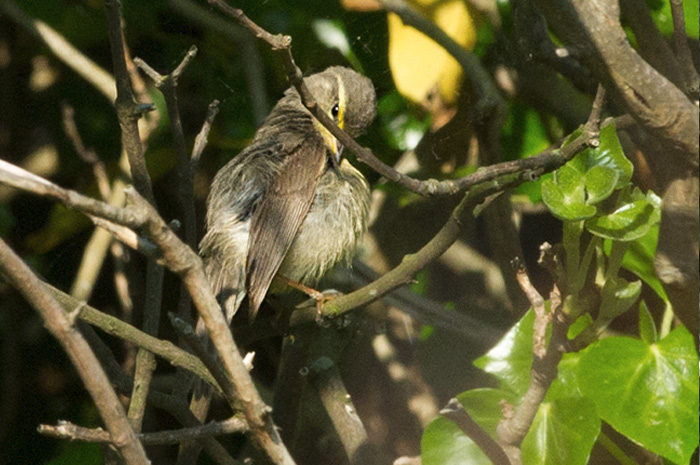
Arctic Warbler and Radde’s warbler were out of the question and we realized that the bird might actually be something very, very rare. To confident in our own birding skills or perhaps because of simple lack of ambition we had however neglected to bring literature on the rarer Asian Phylloscs to Christiansø. Instead we tried to get some photos of the bird and record the call and song. I got some decent shots of the birds head and started texting the photos to other birders. Most of them had no idea what the bird was, but were all eager to help distributing the photos to other birders. Meanwhile I desperately started checking Xeno Canto for pretty much every rare Asian warbler-species I could possibly think of. Tickells, Yellowstreaked, Tytlers, Pale-legged leaf were all obviously wrong and I struggled to remember the English names for all the different Phyllosc-species, when decent help finally arrived!
My old friend Henrik Haaning Nielsen had seen my photos and suggested the bird could possibly be a Sulphur-bellied Warbler. I remembered having seen that species in India and that it actually had a supercillium like our bird. A quick check of the call and song on xeno canto proved to be a perfect match!
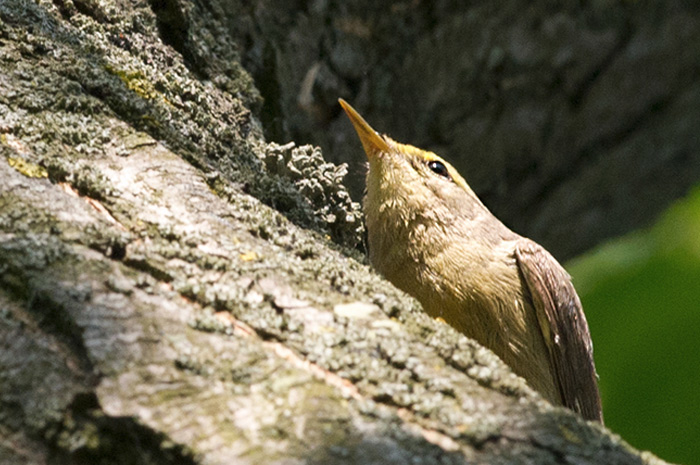
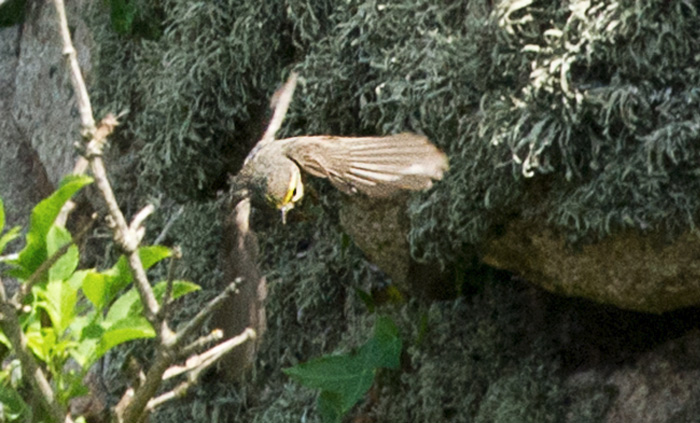
It was indeed a Sulphur-bellied Warbler and although I kept thinking “It can’t be – it’s to bloddy impossible!” – there were no doubt about it. Luckily the bird was quite confiding and kept singing frequently the rest of the day. We even got some good photos and decent song-recordings.
The bird was again present on the 31st may and seen by 25 visiting twitchers. Tomorrow we expect even more to come and visit this Western Palearctic first. And if anyone should feel the urge to see this exclusive LBJ, you’re all very welcome.
Sebastian Klein
01 June 2016
Sulphur-bellied Warbler Phylloscopus griseolus
If accepted as a Sulphur-bellied Warbler, this individual would represent a most unexpected first record for the Western Palearctic. Breeding from north-west Afghanistan and south-east Kazakhstan eastwards to central China, this medium sized Phylloscopus warbler moves only a relatively short distance south to winter in central India.
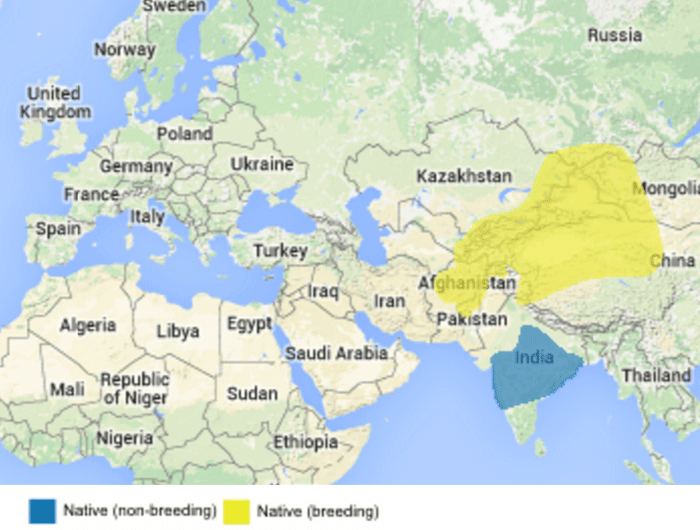
It has the appearance of a Radde’s Warbler, but with a bright yellow supercilium and an extensive yellow wash to the underparts, together with the ‘quip’ call, it is actually quite a distinctive bird. Although it appears that nobody predicted the arrival of this species in western Europe, its range and movements overlap considerably with some of our more regular vagrants, such as Hume’s Yellow-browed Warbler, so, despite it being generally scarce over much of its range, further records may well occur! It must be clear by now, following this and the Pale-legged /Sakhalin Leaf Warbler at Portland in 2014, that almost any species of Asian Phylloscopus warbler seems possible!
Write for Rare Bird Alert
Do you have a birding story you would like to share? From foreign birding trips to your local patch, finders accounts and more, we would love to hear from you.
All our articles are free for anyone to view and we include them in our weekly newsletter which goes out to thousands of birders every Wednesday. We also share them on our Twitter and Facebook pages, making sure your article will get read by as many people as possible.
If you would like to write an article please for us please get in touch with your ideas, thank you.
The RBA team







